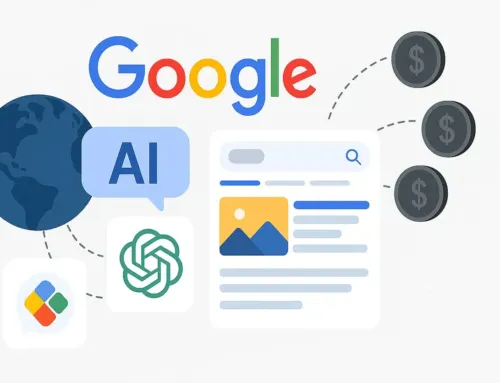How to Create Effective Website Content

Your website content is the single biggest factor influencing whether someone stays or bounces. It’s not just words—it’s what guides a visitor, builds trust, and turns interest into action. If your content isn’t pulling its weight, it’s costing you business.
This guide breaks down exactly what makes effective website content. How businesses can use it to improve rankings, engage visitors, and drive conversions.
Why Effective Website Content Matters More Than Ever
Search engines have become smarter. Google’s algorithm now rewards pages that offer clarity, originality, and value. That means content stuffed with keywords or copied from elsewhere won’t just underperform—it could get penalised.
But beyond Google, your audience is also more discerning. They expect helpful, professional content that answers their questions quickly and clearly. Anything less, and they’ll click away.
Investing in effective website content means your site can:
- Attract qualified traffic through improved SEO
- Increase time on site and reduce bounce rates
- Build trust and authority with your audience
- Drive more leads, sales, or enquiries
What Counts as Effective Website Content?
Effective website content isn’t just copywriting. It includes everything that contributes to the user’s journey and your site’s visibility:
- Your homepage, about page, service pages, and contact forms must all communicate clearly and with purpose.
- Your blog should answer real customer questions.
- Even your navigation menus, URLs, and image alt text play a role in how people and search engines interpret your site.
It also includes:
- Clean formatting and clear headings
- Logical internal linking between related content
- Mobile responsiveness
- Calls to action that guide users forward
Originality Is Non-Negotiable
Copying or duplicating content from other websites is not just lazy—it damages your SEO. Google actively penalises duplicated content, pushing it down in search rankings.
But there’s more to originality than avoiding plagiarism. You need to offer something fresh. That could be:
- Explaining your services in your brand voice
- Sharing case studies unique to your business
- Writing blog posts based on customer questions you actually receive
The goal is to stand out with clear, helpful, and authentic content—not blend in with recycled copy.
How to Create Effective Website Content (Step-by-Step)
Understand Your Audience
Everything starts with your audience. What problems are they trying to solve? What questions do they ask before buying?
Use tools like Google Search Console, Google Analytics, and customer feedback to get clear on your audience’s pain points. Then write to address them—clearly, confidently, and directly.
Prioritise Quality Over Quantity
Publishing loads of blog posts or service pages might look productive, but it’s meaningless if the content is thin or unclear. High-quality content doesn’t just sound good—it serves a purpose. That could be to inform, guide, or convert.
Instead of churning out volume, aim to make every page genuinely useful. Focus on clarity, structure, and relevance. When in doubt, ask: “What value does this page offer the visitor?”
Use Keywords Naturally
Keywords still matter, but how you use them matters more. You want your focus keyword—effective website content—to appear naturally, not forced.
Integrate it in your:
- H1 and at least one subheading
- Opening paragraph
- Body content at regular intervals (aim for 1–2% density)
- Meta description and image alt text
But avoid keyword stuffing. Prioritise readability and flow. Google now understands context, so secondary terms and natural language work just as well.
Add Visual Support
Effective content isn’t just text. Images, charts, and video help explain complex ideas and break up long sections.
Use visuals where they make sense:
- Product or service demos
- Explainer graphics
- Before-and-after comparisons
Every visual should be optimised—compressed for speed, and with alt text describing the image using a relevant keyword.
Keep Content Up to Date
Outdated content hurts your credibility. Make it a habit to revisit key pages at least every six months. Check for broken links, outdated info, or services you no longer offer.
Blogs should also stay fresh. A good rhythm is to publish new posts monthly, focusing on timely topics, industry insights, or customer FAQs.
You can also update old blog posts with new information. This improves relevance and helps rankings.
Make It Mobile Friendly
Most users now view websites on their phone. If your content is hard to read, slow to load, or poorly formatted on mobile, you’re losing traffic.
Use responsive design. Keep paragraphs short and scannable. Optimise images and compress files. And make sure buttons and forms are easy to use on smaller screens.
Mobile experience isn’t a bonus—it’s essential.
Always Include Clear CTAs
You can’t expect users to guess what to do next. Every key page should have a clear call to action (CTA).
Good CTAs:
- Use action words (“Book a consult”, “Get started”, “Send an enquiry”)
- Are specific and relevant to the page
- Stand out visually without being intrusive
Test different placements and wording to see what converts best. And remember—every CTA should serve a business goal.
Connect Your Content with Smart Internal Links
Internal linking helps users navigate your site and tells search engines which pages are related. It’s also a chance to keep visitors engaged longer.
Link from blog posts to your service pages using natural anchor text, like:
- “Learn more about our WordPress Website Design services”
- “See how we handle Custom Website Design projects”
Avoid overlinking or using the same anchor text repeatedly. Keep it relevant and helpful.
SEO Still Matters—But It’s Not Everything
Search Engine Optimisation (SEO) makes your content discoverable. But SEO alone won’t convert visitors. That’s why it must work hand-in-hand with clarity, structure, and relevance.
Use these essentials:
- Meta descriptions that accurately reflect the page
- Title tags with primary keywords
- Fast load times on all devices
- Schema markup, where applicable
SEO gets you found. Good content gets you chosen.
For a deeper dive into SEO fundamentals, check out Google’s SEO Starter Guide.
Content Creation Is Ongoing—Not a One-Off
Think of your website as a living asset. Your content should grow, evolve, and improve over time. That means regularly adding new content, removing what’s outdated, and refining what’s underperforming.
Monitor your analytics. Track what people are reading, where they drop off, and what drives conversions. Let the data guide your next steps.
A content-first approach isn’t a cost—it’s a long-term growth strategy.
If your website content isn’t helping you grow, it’s holding you back.
Book a free strategy call with Scorched Media and start turning content into conversions.
FAQs:
What is effective website content?
Content that is clear, original, and designed to meet your audience’s needs while supporting SEO and conversions.
Why is originality important in content?
Search engines prioritise unique content. Duplicates can lead to lower rankings and reduced trust.
How often should I update my content?
Review key pages every 3–6 months. Blog monthly or quarterly to keep your site fresh.
What role does SEO play in content?
SEO makes content visible in search results. It includes keywords, internal links, meta data, and site speed.
How can I improve my website content?
Start with your audience’s needs. Write clearly, include visuals, add strong CTAs, and optimise for mobile and SEO.




